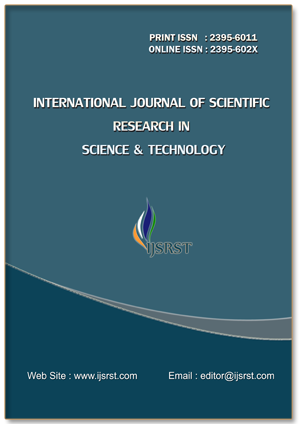Raman Spectroscopic Analysis of Inkjet and Laser Printed Documents to Find the Source of Printing
DOI:
https://doi.org/10.32628/IJSRST2310184Keywords:
Forgery, Toner, Raman spectroscopy, inkjet, Laser, Forensic documentationAbstract
This work investigates the use of Raman spectroscopy as a non-destructive tool for analysing inkjet and laser printed counterfeits. The primary goal of the study was to determine if Raman spectroscopy is an acceptable tool for demonstrating the link between various specimens of counterfeits suspected of being printed with the same toner on the same machine. Specimens of several kinds of toners printed on various types of paper are studied using a Raman spectroscopy apparatus with an excitation line at 514.5 nm. Cyan, magenta, yellow, and black toners are examined independently for each specimen. The Raman spectra of the cyan and yellow toners were the most distinguishable. The findings reveal that Raman spectroscopy may be used effectively to analyse colour toner printed document counterfeiting, such as banknotes and papers, in order to create linkages between more or less varied specimens of counterfeits by evaluating the characteristics of a colour toner.
References
- V. Causin, R. Casamassima, C. Marega, P. Maida, S. Schiavone, A. Marigo, A. Villari,The discrimination potential of ultraviolet–visible spectrophotometry, thin layer chromatography, and Fourier transform infrared spectroscopy for the forensic analysis of black and blue ballpoint inks, J. Forensic Sci. 53 (2008) 1468–1473.
- D. Djozdan, T. Baheri, G. Karimian, M. Shahidi, Forensic discrimination of blue ballpoint pen inks based on thin layer chromatography and image analysis, Forensic Sci. Int. 179 (2008) 199–205.
- S.E.J. Bell, s.P. Stewart, Y.Ch. Ho, B.W. Craythorne, S.J. Speers, Comparison of the discriminating power of Raman and surface-enhanced Raman spectroscopy with established techniques for examination of liquid and gel inks, J. Raman Spectrosc. 44 (2013) 509–517.
- J. Zie ̨ ba-Palus, M. Kunicki, Application of the micro-FTIR spectroscopy, Raman spectroscopy and XRF method examination of inks, Forensic Sci. Int. 158 (2006) 164–172.
- M.R. Williams, C. Moody, L.A. Arceneaux, C. Rinke, K. White, M.E. Sigman, Analysis of black writing ink by electrospray ionization mass spectrometry, Forensic Sci. Int. 191 (2009) 97–103.
- C. Weyerman, L. Bucher, P. Majcherczyk, W. Mazzella, C. Roux, P. Esseiva, Statistical discrimination of black gel pen inks analysed by laser desorption/ionization mass spectrometry, Forensic Sci. Int. 217 (2012) 127–133.
- C. Weyerman, L. Bucher, P. Majcherczyk, A statistical methodology for the comparison of blue gel pen inks analysed by laser desorption/ionization mass spectrometry, Sci. Justice 51 (2011) 122–130.
- M. Gallidabino, C. Weyermann, R. Marquis, Differentiation of blue ballpoint pen inks by positive and negative mode LDI-MS, Forensic Sci. Int. 204 (2011) 169–178.
- A. Kher, M. Mulholland, E. Green, B. Reedy, Forensic classification of ballpoint pen inks using high performance liquid chromatography and infrared spectroscopywith principal components analysis and linear discriminant analysis, Vib. Spectrosc. 40 (2006) 270–277.
- S.P. Day, The examination of inkjet printed documents, ENFSI European Document Experts Working Group, 001 (2004) 1-21.
- S. Donelly, E.M. Josette, T. Cornell, K. Fowler, J. Allison, Analysis of pigmented inkjet printer inks and printed documents by laser desorption/mass spectrometry, J. Forensic Sci. 55 (2010) 129–135.
- K. Vikman, K. Sipi, Applicability of FTIR and Raman spectroscopic methods to study of paper–ink interaction in digital prints, J. Imaging Sci. Technol. 47 (2003) 139–148.
- J. Zie ̨ ba-Palus, B. Trzcin ́ ska, Establishing of chemical composition of printing ink, J. Forensic Sci. 56 (2011) 819–821.
- L. Heudt, D. Debois, T.A. Zimmerman, L. Ko ̈ hler, F. Bano, F. Partouche, A.-S. Duwez, B. Gilbert, E. De Pauw, Raman spectroscopy and laser desorption mass spectrometry for minimal destructive forensic analysis of black and color inkjet printed documents, Forensic Sci. Int. 219 (2012) 64–75.
- M.R. de Almeida, D.N. Correa, W.F.C. Rocha, F.J.O. Scafi, R.J. Poppi, Discrimination between authentic and counterfeit banknotes using Raman spectroscopy and PLS-DA with uncertainty estimation, Microchem. J. 109 (2013) 170–177.
- M. Szafarska, R. Wietecha-Posłuszny, M. Woz ́ niakiewicz, P. Kos ́cielniak, Examination of colour inkjet printing inks by capillary electrophoresis, Talanta 84 (2011) 1234–1243.
- M. Szafarska, R. Wietecha-Posłuszny, M. Woz ́ niakiewicz, P. Kos ́cielniak, Application of capillary electrophoresis to examination of color inkjet printing inks for forensic purposes, Forensic Sci. Int. 212 (2011) 78–85.
- V.N. Aginsky, Dating and characterizing writing, stamp pad and jet printer inks by gas chromatography/mass spectrometry, Int. J. Forensic Doc. Examination 2(1996) 103–115.
- K. Vikman, K. Sipi, Applicability of FTIR and Raman spectroscopic methods to the study of paper-ink interactions in digital prints, J. Imaging Sci. Technol. 47 (2003) 139–148.
- M. Szafarska, R. Wietecha-Posłuszny, M. Woz ́ niakiewicz, C. Hughes, P. Kos ́cielniak, Influence of storage conditions on aging of colour dye-based inkjet printing inks, Probl. Forensic Sci. 82 (2010) 133–140.
Downloads
Published
Issue
Section
License
Copyright (c) IJSRST

This work is licensed under a Creative Commons Attribution 4.0 International License.

